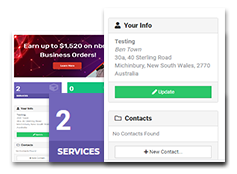In the past, number porting has been a cumbersome and time-consuming process, both internally and for our partners.
Based on an internal review and feedback from across our partner base, we’re happy to report that the process has now been simplified and made easier for all parties involved.
What’s changed?
Some partners would have seen a difference in number port requests over the last week as we slowly rolled out the changes. Effective immediately, all partners will see the following changes
A simpler number porting form with the ability to save what you’re doing and return to it later at a time that suits you
A qualification and verification of the numbers prior to the port formally being accepted, meaning a higher degree of ports being completed without rejections and further delays
The qualification process will be completed prior to a formal order being created, this is to ensure that all numbers and associated details are obtained to avoid delays with resubmission
The number porting process can now be visualised in the following steps
1. You submit a number port via the Partner Portal
2. We complete a qualification of the number port request and liaise with you to resolve any discrepancies or issues
3. We raise a formal order (this is when the target delivery time frame begins)
4. We work with the losing carrier to book a time in and port the numbers
5. You start using your newly ported numbers
It’s important to remember that there are two different types of number ports, and both have wildly different delivery time frames.
A simple port, otherwise known as a Category A port, is any single number that has no attached services such as line hunt, Telstra DOT, fax duo, etc. These ports generally take 1-2 weeks to complete from formal acceptance to the port being completed.
A complex port, otherwise known as a Category C port, is anything that doesn’t fall under a simple port. That includes multiple separate numbers, number ranges, numbers with complex services such as line hunt, Telstra DOT, fax duo, etc. These ports require manual intervention at all levels and generally take 10-12 weeks to complete from formal acceptance to the port being completed.
This detail and more is reaffirmed on the first page of the new number porting from in the Partner Portal. We’d kindly ask that you read through this when completing each number port request to ensure that the process can run as smoothly as possible.
What’s coming
As easy as the new process is, we know that it can still be difficult to convey number porting to end customers with ease. Because of this, our team is hard at work at creating a white labelled end user document that clearly explains number porting and it’s process without the technical jargon. Keep an eye out for this as it’s slated to release along with a few updated support articles next week.
Finally, please keep the feedback coming as we are always on the lookout for improvement, now matter how big or small. With that in mind, we’re always happy to help so if you run into any challenges or questions when using the updated form and process please don’t hesitate to reach out to us.
 Contact us
Contact us  Partner Login
Partner Login  Service Status
Service Status 


 August 28, 2020
August 28, 2020
 Luke Bragg
Luke Bragg
 2 min
2 min